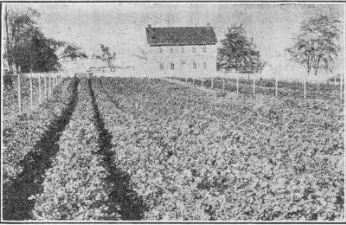408. Cultivation Of Celery
Description
This section is from the book "Vegetable Gardening", by Ralph L. Watts. Also available from Amazon: Vegetable Gardening.
408. Cultivation Of Celery
The ground should be cultivated as soon as possible after transplanting, precaution being taken not to throw any soil on the hearts of the plants. As celery is a shallow-rooted crop, tillage should never be deep; the ground should be stirred and hoed often enough to control weeds and to conserve soil moisture.
409. Mulching
Pine needles, straw and other materials are used for mulching celery, but horse manure is very much the best mulch. It is not only an excellent conserver of moisture, but furnishes plant food as well. Some of the most successful intensive growers use the following plan for White Plume and Golden Self-Blanching and for summer, fall and early winter sales: The plants are set at the usual times, at distances of 4 or 5 inches by 24 inches. As soon as possible after transplanting, the ground is mulched with 40 to 50 tons of fresh horse manure to the acre. The manure should not be placed against the plants. If applied at the rate suggested, the mulch will be 4 or 5 inches deep at the centers of the row spaces, sloping gradually to the rows themselves. No tillage is given if the mulch is applied immediately after planting, otherwise the ground should be kept well stirred until mulched. The manure will be thoroughly decayed till the following spring ready for the next crop, whatever it may be. This plan has met with great favor in the Cleveland district, especially with growers using the overhead system of irrigation.
410. Irrigation
Many of the finest celery plantations are irrigated. Production without artificial watering on soils other than muck is rather uncertain. Irrigation insures a crop on all soils provided other conditions are favorable. Figure 76 shows a system installed in central Pennsylvania. It is especially valuable in conjunction with mulching, as previously discussed (409). Nitrate of soda when applied broadcast may be dissolved at once by the spray, thus feeding the plants without waiting for rain to render it available.

Fig. 76. irrigated field of celery.
The distribution of water through open ditches is the usual method employed in the irrigation sections of the West. Subirrigation is used extensively in the celery fields at Sanford, Fla.
Continue to:
Tags
plants, crops, gardening, cultivated, harvesting, food ,greenhouses, fertiliser, vegitables
